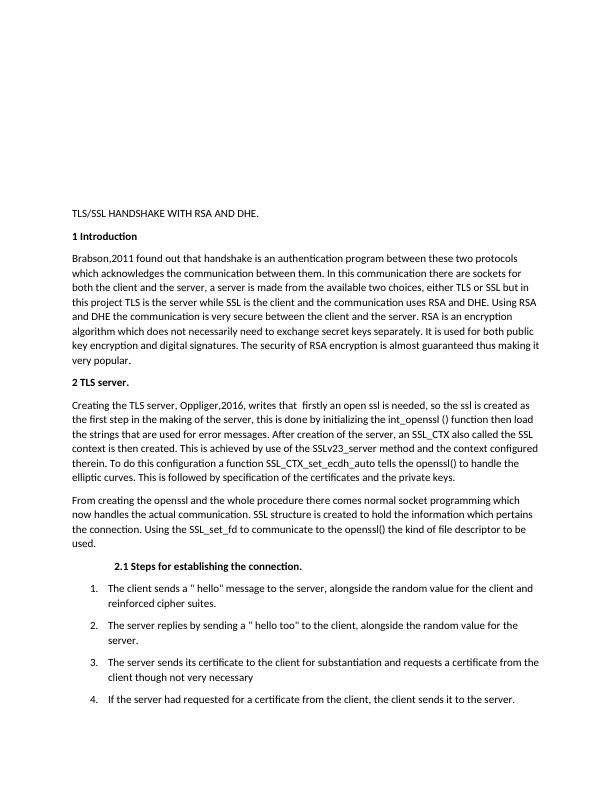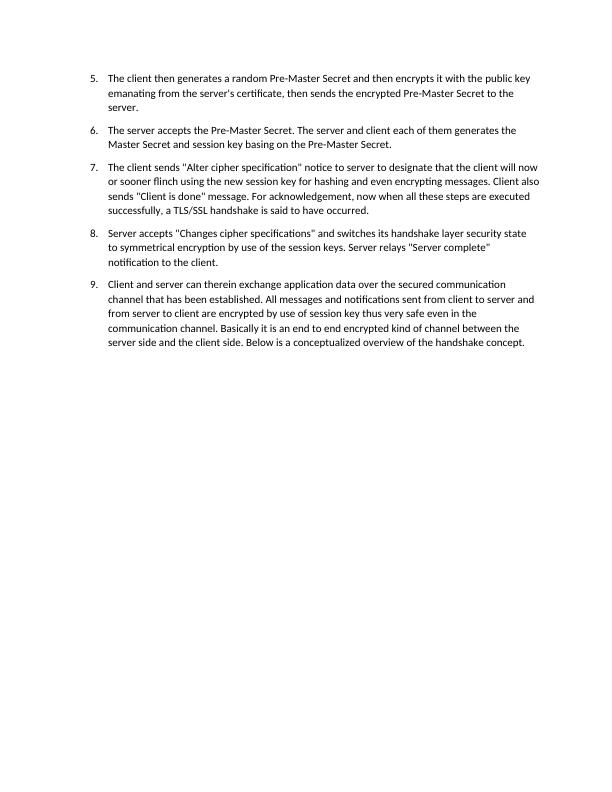TLS/SSL Handshake with RSA and DHE - Desklib
16 Pages2305 Words399 Views
Added on 2023-06-10
About This Document
This article explains the TLS/SSL Handshake with RSA and DHE, including the steps for establishing the connection, authentication, and code execution. It also provides references for further reading. This content is relevant for computer science and engineering courses in universities and colleges. Get solved assignments, essays, and dissertations on Desklib.
TLS/SSL Handshake with RSA and DHE - Desklib
Added on 2023-06-10
ShareRelated Documents
End of preview
Want to access all the pages? Upload your documents or become a member.
SSL/TLS VPN Technologies for Secure Network Connection
|8
|2000
|419
SSL Handshake: A Process for Secure Communication between Client and Server
|5
|774
|344
Wireshark Lab: SSL v7.0
|15
|2052
|219
Root Certificates- Doc
|13
|3497
|643
Advanced Network Security - PDF
|9
|1400
|70
Advanced Network Security: Cryptography, HTTPS, Access Control, Firewalls, Wireless Security
|10
|1404
|169




